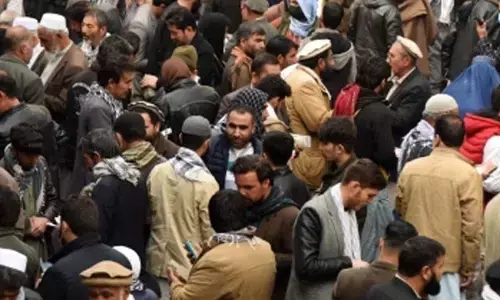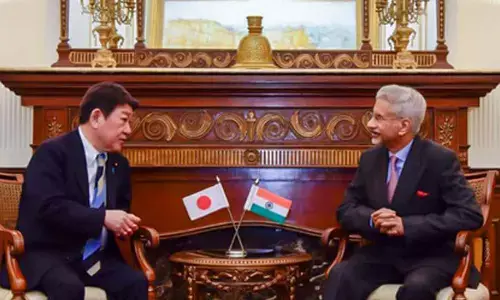Wisdom for modern decision-making

The Chakravyuh is a famous military formation described in the ancient Indian epic, the Mahabharata.
The Chakravyuh is a famous military formation described in the ancient Indian epic, the Mahabharata. It is a circular or maze-like formation that was famously used by the Kaurava forces during the Kurukshetra War against the Pandavas. Abhimanyu, the son of Arjuna and Subhadra, was the only warrior who knew how to penetrate the Chakravyuh, but he was trapped and ultimately killed while inside it.
As we navigate the intricate pathways of the contemporary corporate battlefield, the Chakravyuh of the Mahabharata emerges as a compelling metaphor for the challenges faced by modern leaders. In a world marked by relentless change, strategic dilemmas, and ethical complexities, the lessons embedded in the ancient narrative resonate more than ever.
The Chakravyuh encapsulates not only the military prowess of a bygone era but serves as a symbolic labyrinth, inviting us to explore profound insights applicable to the nuances of modern decision-making and leadership. In this exploration, we unravel the timeless wisdom encapsulated in the Chakravyuh and translate it into actionable principles for those at the helm in today’s dynamic and competitive environments.
Here is a detailed interpretation of the Chakravyuh in the context of the Mahabharata:
1.Strategic military formation:
The Chakravyuh is a complex military formation designed to trap and confuse the enemy. It involves creating a circular or labyrinthine pattern of soldiers, horses, and chariots, making it difficult for the opposing army to penetrate or navigate.
2.Tactical brilliance and deception:
The use of the Chakravyuh by the Kauravas represents their tactical brilliance and the element of deception in warfare. Dronacharya, the commander-in-chief of the Kaurava army, employed this formation to exploit the vulnerability of the Pandava forces.
3.Abhimanyu’s tragedy:
Abhimanyu, though young and skilled, only learned the technique of entering the Chakravyuh while in his mother’s womb. He knew how to penetrate the formation but not how to exit. His tragic fate symbolizes the vulnerability of even the most skilled warriors when faced with overwhelming odds and inadequate knowledge.
4.Symbolism of life’s challenges:
The Chakravyuh is often interpreted symbolically to represent the challenges and complexities of life. Just as Abhimanyu faced a formidable task in navigating and escaping the Chakravyuh, individuals encounter intricate challenges in their life journeys.
5.Lesson on preparedness:
Abhimanyu’s inability to exit the Chakravyuh highlights the importance of being well-prepared and having a comprehensive understanding of a situation. It serves as a lesson in the consequences of incomplete knowledge and the importance of continuous learning.
6.Moral dilemma and ethical warfare:
The use of such intricate formations raises ethical questions about warfare. The Mahabharata, in general, explores the moral dilemmas associated with war, and the Chakravyuh is a strategic device that adds complexity to the narrative.
7.Legacy of the Chakravyuh:
The Chakravyuh episode is one of the most memorable and tragic events in the Mahabharata. It serves as a pivotal moment in the Kurukshetra War and contributes to the overall narrative of the epic, emphasizing the cost of war and the sacrifices made by the characters.
InMahabharata is not just a military tactic but a multifaceted symbol that encompasses strategic warfare, life’s challenges, ethical considerations, and the consequences of incomplete knowledge. It adds depth to the narrative and provides readers with valuable insights into the complexities of human existence and the nature of conflict.Mahabharata offers several valuable lessons and insights that are relevant to life, leadership, and decision-making. Here are some key lessons one can learn from the Chakravyuh:
1.Importance of knowledge and education:
Abhimanyu’s tragedy highlights the significance of comprehensive knowledge and education. While he knew how to enter the Chakravyuh, he lacked the knowledge to exit it. The lesson is to pursue holistic learning and be well-prepared for the challenges one might encounter.
2.Strategic thinking and planning:
The use of the Chakravyuh by the Kauravas showcases the importance of strategic thinking in warfare and life. Planning and executing strategies with foresight can be crucial in overcoming challenges and achieving success.
3.Adaptability and flexibility:
Abhimanyu’s struggle inside the Chakravyuh underscores the importance of adaptability. In life, situations may not always go as planned, and being flexible and adaptable is key to navigating complex circumstances.
4.Ethical considerations in decision-making:
The Chakravyuh episode raises ethical questions about the use of complex military formations. It encourages reflection on the morality of decisions made in the pursuit of goals and the ethical considerations associated with warfare or any challenging situation.
5.Awareness of surroundings:
Abhimanyu’s experience inside the Chakravyuh emphasizes the importance of being aware of one’s surroundings. In life, staying vigilant and perceptive can help individuals make informed decisions and navigate challenges effectively.
6.Leadership lessons:
Leaders can learn from both Dronacharya’s tactical brilliance and Abhimanyu’s courage. Effective leaders should possess strategic thinking, make informed decisions, and, at the same time, be mindful of the well-being and preparedness of their team members.
7. Acceptance of limitations:
Abhimanyu’s fate also teaches us about the acceptance of limitations. Despite his skill and bravery, he faced a situation where he was unable to overcome the odds. Recognizing one’s limitations and seeking help when needed is an important aspect of personal and professional growth.
8. The cost of war:
The Chakravyuh episode, situated within the context of the Kurukshetra War, serves as a reminder of the human cost of conflict. It encourages reflection on the consequences of decisions that lead to war and the sacrifices made by individuals in the pursuit of larger goals.
9. Continuous learning:
Abhimanyu’s story suggests the importance of continuous learning throughout life. Acquiring knowledge is not a one-time event, and individuals should be committed to ongoing education and self-improvement.
Abhimanyu’s decision to enter the Chakravyuh reflects the balancing act between taking risks and exercising caution.
While risk-taking is essential for growth, it should be accompanied by careful consideration of potential consequences.
In the dynamic landscape of modern business and leadership, the Chakravyuh offers more than historical intrigue; it serves as a living paradigm for strategic acumen and ethical fortitude.
As contemporary leaders face ever-evolving challenges, the Chakravyuh beckons as a guide, urging a delicate balance between strategic brilliance and ethical considerations.
(The author is a Professor - Media & Communication, School of Media Studies, Presidency University- Bangalore)














